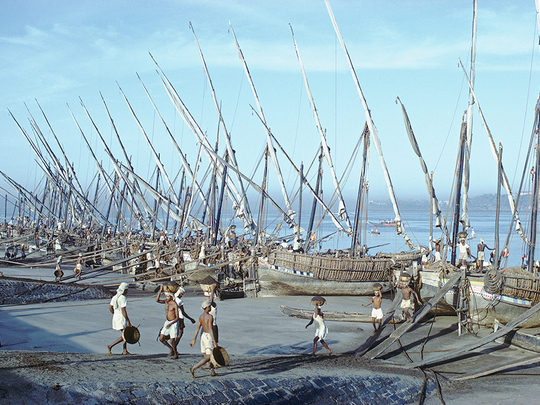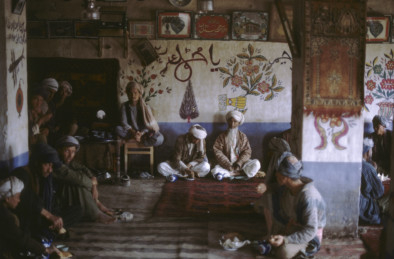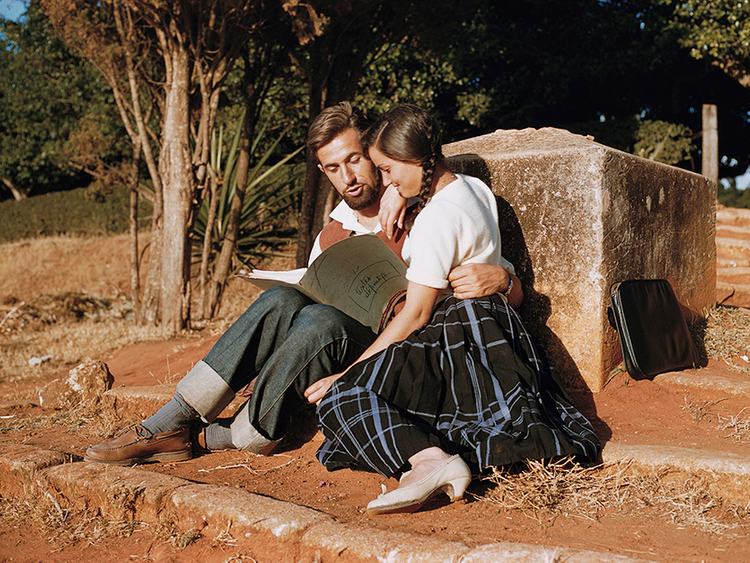
Roland Michaud became interested in Islamic culture and photography while serving in Morocco with the French military in the 1950s. The Frenchman, who was in his 20s then, also met his wife Sabrina in Morocco. The couple’s shared passion for travelling and interest in the Orient has led them to dedicate their lives to discovering and documenting new places and cultures.
On their first trip in 1960, they drove across East Africa in their Citroën car, spending 17 months on the road. Four years later they set out for Asia on a journey that lasted four and a half years. Since then they have travelled by car, boat, on horseback and on foot throughout the Orient. They have exhibited their photographs around the world, and have published more than 20 books about their travels.
Their latest show in Dubai, “Mirror of the Orient”, features selected photographs from their travels to various countries that reflect various aspects of Islamic civilisation and culture. Alongside their own photographs, the artists have displayed pictures of ancient miniature paintings and manuscript illustrations that have inspired them, thus drawing parallels between life in a bygone era and in contemporary times, and reminding us that there are some things at the core of a culture that never change. The show has been organised by The Empty Quarter gallery in association with Alliance Française Dubai and Aramex.
“We have always been enchanted by the light, colour and transparency of Persian miniatures, and the people and cultures they depict. Seeing beautiful Oriental miniatures and illustrations motivated us to travel and actually experience these cultures. During our first trip across Asia in 1964 we learnt that despite the gulf separating the idealised world of the miniature from the reality of daily life in the East, something essential and profound of the past still endures. We wanted to capture this authenticity and genuineness of these cultures in our photographs. We see ourselves as eternal lovers seeking to capture reflections of divine beauty, and this exhibition is about showing the beauty of Islamic culture and inviting people to reflect on it,” Roland Michaud says.
The photographs they have selected for the show range from images shot in the 1960s to recent works. The artists have captured myriad moods and moments from daily life such as the relaxed atmosphere of a traditional tea house and the excitement of a game of buzkashi in Afghanistan; the spirituality of a dancing dervish in Turkey, and the hustle and bustle at a dhow port in Mumbai that no longer exists. There are pictures of a camel herder leading his camels across the Pamir desert, veiled nomad women riding horses in Iran, views of Occupied Jerusalem from the Mount of Olives, a schoolboy with his books in Pakistan, bathers in a hammam in Istanbul, mosques in Morocco, India and China, and a variety of people such as blacksmiths, musicians, craftsmen, falconers and snow jugglers.
There is an amazing resemblance between the scenes captured in the photographs and those depicted in the ancient miniatures and illustrations paired with them. The artists have also shared their memories about the people and places in the pictures, such as a note about the falconer saying that while serving tea, he offered the first cup to his falcon.
“The source of the inspiration for this exhibition is the theme of mirrors in Islamic culture. My fascination with the idea of mirrors dates back to my trip to Iran 60 years ago. I was amazed to discover that the Palace of Forty Columns in Isfahan had only 20 columns, but their reflection in the water made them appear double this number. Here, we have set up a dialogue between art and life, between past and present, and between the paintings of early Oriental miniaturists and our contemporary photographs. We sometimes started with the miniature, looking for a similar photograph, and sometimes found the miniature that resembled a picture we had taken, but it is interesting to see how the two complete and enrich one another. Despite the cultural and technical differences, there is a strong sense of continuity and convergence. These images reflect a spiritual message, and together, they talk and we question their resemblance. Probably 700 years separate a picture from its illustration, but the essence of culture remains,” Michaud says.
Jyoti Kalsi is an arts-enthusiast based in Dubai.
“Mirror of the Orient” will run at The Empty Quarter gallery until March 12.










